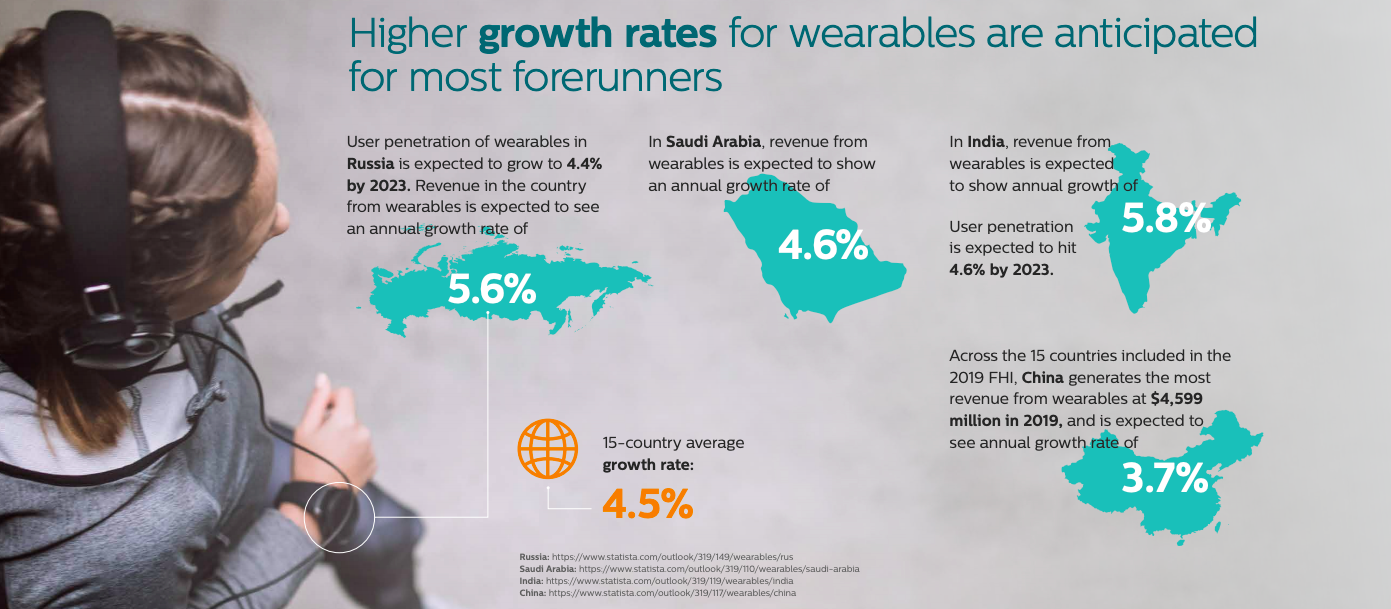A new global survey paints China and some other countries as forerunners in digital health adoption compared with United States and European nations, but it’s not clear from the survey whether both urban and rural populations were polled in those countries.
China is at 94 percent; India at 88 percent; Saudi Arabia at 84 percent and Russia is at 81 percent when it comes to percentage of healthcare professional who use any digital health technology or mobile health apps.
And lagging behind is the United States where 76 percent of healthcare professionals are using digital health technology or mobile health apps.
That’s according to the Future Health Index 2019 study commissioned by Philips. The study is based on primary research conducted in 15 countries, and the research probes the experiences of both healthcare professionals and people, including both current and previous patients. Their experiences are mapped across two two pillars of the Quadruple Aim: improved patient experience and improved staff experience.
Want to publish your own articles on DistilINFO Publications?
Send us an email, we will get in touch with you.
The report is based on a survey of 15,114 people and more than 3,194 healthcare professionals. But given that healthcare access remains an acute problem in countries like China and India and the wide disparity between urban and rural settings, it’s not clear from the survey whether pollsters surveyed urban, rural or a mix of the two when it came to healthcare professionals and patients who report such tech use.
Philips’ survey describes China and Saudi Arabia primarily and in some cases India and Russia as forerunners in terms of digital health use and adoption and countries from whose experiences other countries globally can learn from.
China especially appears to be ahead in terms of healthcare professionals recommending patients to use digital health technology or or mobile apps to monitor vital signs compared with peers in other countries. A full 60 percent of Chinese healthcare providers recommend patients use digital health technology or mobile apps to monitor their blood pressure compared with the global 15-country average of 44 percent.

When it comes to adults, people in Russia (40 percent) and China (44 percent) are more likely to say that they would prefer a e-visit using digital channels for non-urgent care compared with the 15-country average of 27 percent.
When it comes to wearables India leads the 15-country pack with revenue from this category expected to annual growth of 5.8 percent compared with a revenue growth rate of 4.5 percent globally.

The report also pointed out that between 2013 and the first quarter of 2018, China accounted for the lion’s share of global investment and financing in artificial at 60 percent followed by the U.S. (29 percent) and India (5 percent).
Overall, the report concluded that “healthcare professionals that have brought digital health technology into their ways of working are seeing a positive impact on the way that they and their patients experience healthcare.”
While the report gives the impression that China, Russia and India are sprinting ahead in terms of digital health adoption, it’s not clear in which regions of each country, the survey — done both online and offline —was conducted in. For instance, there are vast differences in India’s urban and rural populations both in terms of access to healthcare and access to digital health technology and the survey methodology doesn’t indicate whether both populations were addressed.
Date: June 26, 2019
Source: MedCityNews







